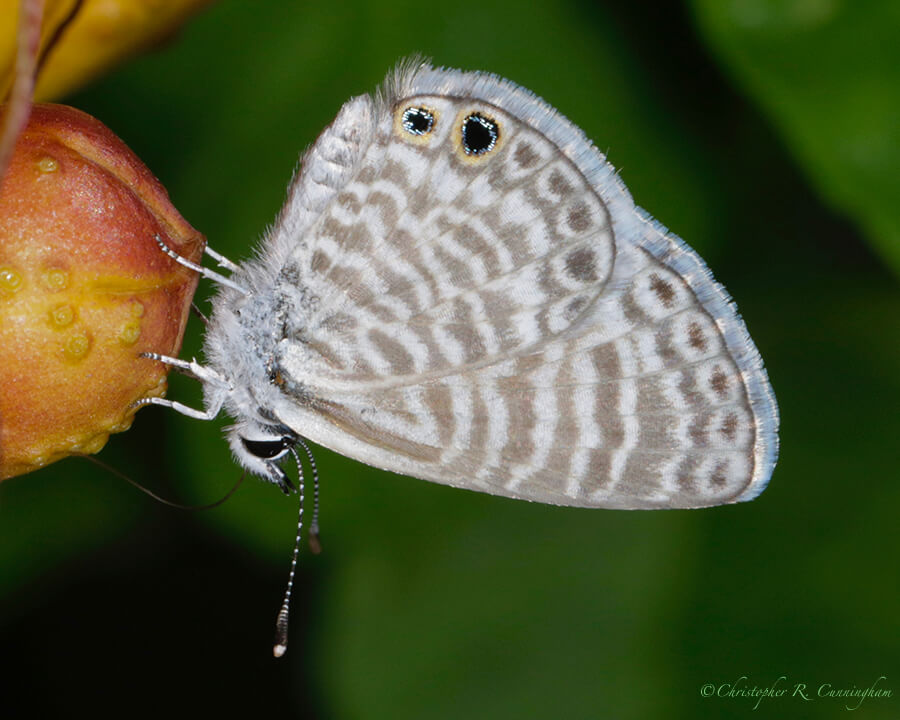Our world is made up of a myriad of microcosms, of tiny worlds, each with its own habitués, every one known to the others.–Louis L’Amour, Education of a Wandering Man

The last several weeks have found us swamped with work and moving (again!). A thousand-mile move finds us in Portal, Arizona for most of the summer. June is by local standards the “worst” month to be out here, but by Houston standards it is quite pleasant. The days have been hot and dry (around 90° F) with nights in the 60º’s F (although 50º’s are more typical historically). Strangely, over the past few days a monsoon-like pattern has developed with brief showers in the afternoon. The real monsoon should appear next month, when the “best” time of the year begins complete with the blooming of the desert.

While unpacking and working on the house, I wanted an “easy” photography project to unwind, and much to my delight the mystery vine that is threaded through the patio and onto an arbor has turned out to be a trumpet vine (Campsis radicans) literally crawling with a host of insect species, including ants, flies, bugs (Homoptera), bees and wasps, and butterflies. As a bonus, while watering the vine yesterday a huge tarantula hawk (Pompilidae) appeared to drink from a splash on the patio. Many of these denizens of the Trumpet Vine World were large enough to photograph with a standard macro lens. It will be quite the task to identify the arthropodan menagerie of this mini-world–but I’ll put it on the list of Arizona projects!
This vine is also serving as a food plant for hummingbirds–nectar and associated insects. In the past two days, we have observed three hummingbird species drinking from the flowers: Blue-throated, Black-chinned, and Broad-billed. Likely there are also Magnificent Hummingbirds around, but we haven’t spotted any, yet. We’re not quite ready to start going after the birds seriously, at least for now. According to a neighbor, because of all the feeders, Magnificent and Blue-throated hummingbirds are now year-round residents in Cave Creek Canyon.
Finally, trumpet vine has a bad reputation among gardeners because of its aggressive and invasive nature. It is native to the eastern United States and naturalized in parts of the West. I personally love flowering vines, and once we are installed here permanently, I can foresee a diversity of native vines to feed our resident and itinerant hummingbirds–and the vast and largely unnoticed arthropod community.

When you have seen one ant, one bird, one tree, you have not seen them all. –E. O. Wilson
©2018 Christopher R. Cunningham. All rights reserved. No text or images may be duplicated or distributed without permission.